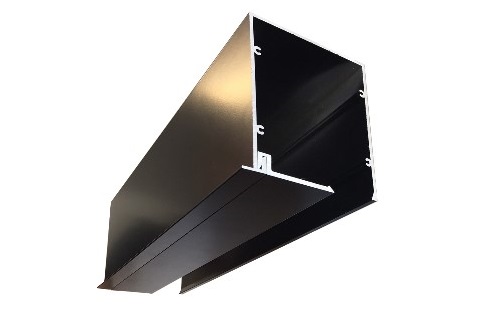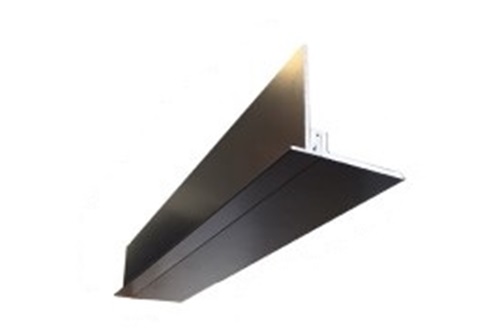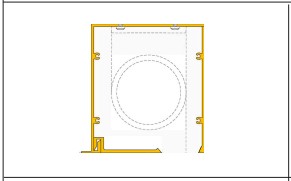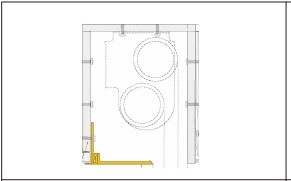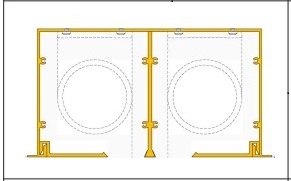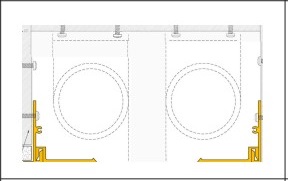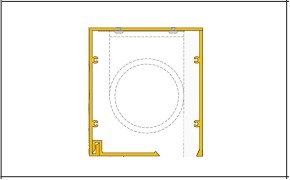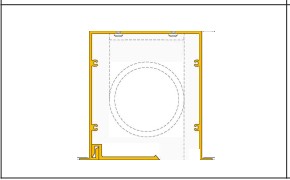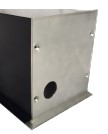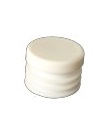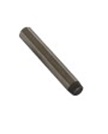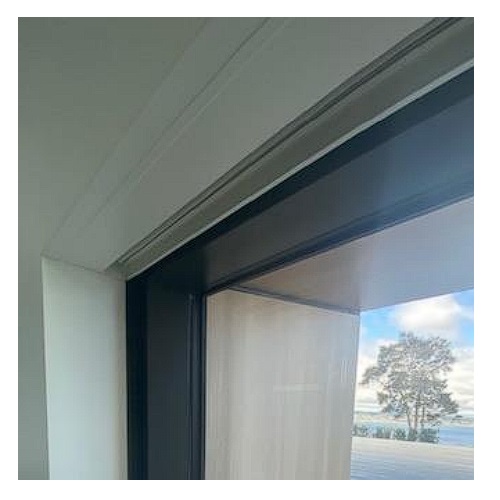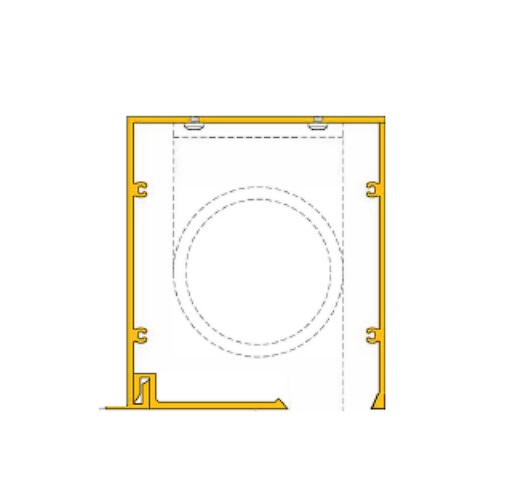RECESSED FLUSHBOX
Immerse yourself in a world where blinds vanish into the ceiling, creating an unparalleled sense of elegance and uninterrupted views, setting a new standard for modern interior design.
Another recessed product conceived with Architects and Builders in mind.
The Vanda Recess FLUSHBOX is designed to conceal Roller Blinds above the line of the ceiling, creating a seamless finish, at the wall to ceiling junction. The Recess FLUSHBOX is made from extruded aluminium and has a removable cover plate that conceals the blind from view.
The FLUSHBOX can be fitted after the ceiling linings have been fixed, stopped and painted as the original Full FLUSHBOX has an 8.0mm flange that covers the end of the cut Gyprock/Gib sheet. Builders need to frame out accurately to allow the FLUSHBOX to fit.
A full recess Flangeless FLUSHBOX extrusion and a Part FLUSHBOX extrusion is also available with removable cover plates.
The full recess FLUSHBOX extrusion has endcaps available if required, supplied in pairs.Blinds can be chain control or automated. Trimming of the removable cover plate is required for chain control blinds. FLUSHBOX extrusion and end caps can be supplied in Mill Finish (M/F) or custom powder coated. Extrusions come supplied in 4.2m lengths.
FLUSHBOX Information Video Link
Questions & Answers
Is it possible to retrofit the Flushbox system?
No, not in the ceiling.
What are the available lengths for the Flush Box extrusions?
4.2mm is standard however we can offer special runs, specifically for large projects. We are able to custom order 150kg minimum runs sizing between 3-6m.
Which colours are available for the Flush Box extrusions?
The box is available in Vanda Classic White and Mill Finish, allowing for custom powder coating.
What is the minimum ceiling space required to accommodate the Full Flush Box?
As we have several options available, please refer to specifications, Architectural drawings for each product.
How much clearance should be considered when using the part box, both for single and /or double systems?
The part box is variable however please refer to our specifications for approximate measurements, please refer to;
VA-PB-101 for single roller
VA-PB-101/1 for double roller
VA-PB-101/2 for two rollers side by side
What steps are typically advised for preparing the ceiling cavity before installing the Flushbox system?
We will always recommend following the Architects specifications however we recommend solid timber nogging along the top for vertical fixing of the box. If box is fixing above the line of architrave, we suggest the blind box be packed out the same thickness as the architrave. We also recommend you use a set of end caps, whether or not you are going wall to wall.
Where the box is fitting past the line of the jam, we generally line up the end of the box with the outside edge of the architrave or if there is no architrave, you can take the box past the window up to 100mm (variable), this will allow more blind overlap onto the solid wall, helping to reduce light penetration, if that is a consideration. There is however no set distance.
Which product should be chosen for creating a custom-sized recess?
Part Box (please refer to architectural drawing VA-PB-101)
At which phase of the installation process is the ideal time to install the Flush Box?
Builders generally like to install the box before the gib ceiling is installed, leave a 2mm gap between the side of the box and the edge of your gib bead. Then
you can remove the box and you stop and paint the ceilings and then put the box back up.
Painters will generally cork the edge, to get a perfect finish. If the boxes ever needed to come out, you will need to cut the cork (because you created a 2mm gap) between the box and the gib, you can then remove the box without disturbing the ceiling.
Is it possible to join multiple Flush Box sections together?
Yes, we have joiner pins
Is there a maximum drop length for the roller blind in this system?
Yes, if the roller blind that has been specified to go into the box, fits within the dimensions of the box (including the base rail). That detail is up to the blind
supplier. Approximately 3.5m drop is the maximum height (fabric dependant) to comfortably fit a roller blind with base rail above the line of the cover plate.
Is there a certain base rail that needs to be used in this system?
No, however we do recommend a sewn pocket or wrapped base rail. This will alleviate the base rail hitting the cover plate.
Who usually installs the flush box?
Vanda supply only, the builder would usually install.
Do you need end caps on all boxes?
Yes, we recommend that end caps be installed on all boxes, besides the part box. It finishes off the product, makes the box more ridged and helps the builder finish the return detail on the gib ceiling.
Where in the flush box is the power cabling more commonly brought through?
Bottom corner, where the cover plate will conceal the hole from view ie. if the blind is to be back rolled, then the hole is on the room side, if the blind is to be front rolled, then the hole is on the window side.
Can the aluminium box be drilled through for cabling?
Yes
Do we require insulator plugs for power cabling?
Yes
Should blinds be check measured after installation of the flush boxes?
Yes
Can you have chain control blinds in flush boxes?
Yes, however the cover plate requires trimming down by 30mm.
ARCHITECTURAL DRAWINGS
- FULL FLUSHBOX ARCHITECTURAL DETAIL DRAWING – SINGLE SYSTEM (VA-FB-100)
- FULL FLUSHBOX DOUBLE MOUNTED SIDE BY SIDE ARCHITECTURAL DETAIL DRAWING – (VA-FB-300)
- PART FLUSHBOX ARCHITECTURAL DETAIL DRAWING – SHOWING PART BOX WITH DOUBLE BRACKET (VA-PB-101)
- PART FLUSHBOX ARCHITECTURAL DETAIL DRAWING – SHOWING PART BOX WITH SINGLE BLIND (VA-PB-101/1)
- PART FLUSHBOX DOUBLE MOUNTED SIDE BY SIDE ARCHITECTURAL DETAIL DRAWING – (VA-PB-101/2)
- FULL FLUSHBOX & FLUSH FIT TRACK ARCHITECTURAL DETAIL DRAWING (VA-FB-100 FLUSHBOX & VA-FF-0001 FLUSHFIT)
- VA-FB-130 (Full Flangeless Flushbox)
- VA-FB-140 (Double Flange Single Flushbox)
- VA-FB-200 (Double Flangeless Flushbox)
- VA-FB-400 (Double Flushbox)
- VA-FB-500 (Double Flushbox)
- VA-FB-600 (Double Flanged Flushbox)

